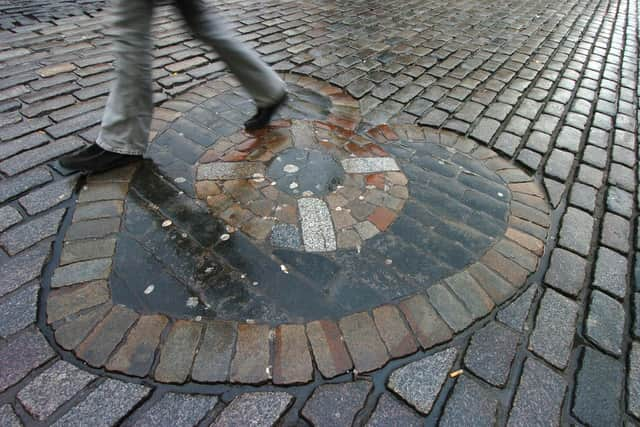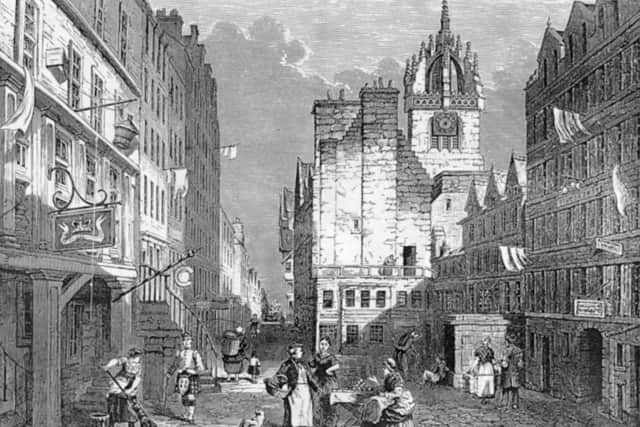Why do Edinburgh locals spit on the Heart of Midlothian?
and live on Freeview channel 276
While spitting in public is not advised during a global pandemic, most locals, if asked, will tell you the iconic Heart of Midlothian emblem on the city’s Royal Mile is covered with gob for good luck.
And though this may be the case for many who participate in the tradition – save for some Hibs fans, who may have their own reasons – Edinburghers first spat on the site before the heart mosaic even existed and it had little to do with superstitions.
Advertisement
Hide AdAdvertisement
Hide AdThe mosaic marks the site of the infamous Tolbooth prison, which stood menacingly in the middle of the High Street for more than 400 years.


The Old Tolbooth
Dubbed the Heart of Midlothian, as it once marked the administrative centre of the county, the 14th century building was only around three-storeys tall, but cast a shadow to rival nearby St Giles’ Cathedral in the minds of those who passed it daily.
Countless souls were incarcerated within its walls, many of them condemned and awaiting their fate at one of the town’s execution spots.


While the building was already hated, legend has it the spitting tradition began due to the Porteous riots of 1736, when Captain John Porteous of the City Guard ordered the killing of six rioters. An angry mob later had Porteous tried and imprisoned at the Tolbooth himself.
Advertisement
Hide AdAdvertisement
Hide AdIt is from this point onwards that locals are believed to have spat in disgust at the entrance to the building whenever they passed it.
While architectural traces of the building were all but swept away with its demolition in 1817, the legacy of the Tolbooth survived and so did the tradition.
One man who had a penchant for preserving Edinburgh’s heritage was author Sir Walter Scott, who salvaged the Tolbooth’s sputum-stained main door for his Abbotsford home. The popularity of Scott’s novel, The Heart of Midlothian, a direct reference of the prison and published within 12 months of its demolition, led to the site of the Tolbooth being permanently marked in the shape of a heart. The Tolbooth’s legacy was further secured in 1874, when a group of gents formed a new football team, calling it the Heart of Mid-lothian after their favourite dancehall, which in turn had been named after the hated prison.
Even the club’s current crest, a spitting image of the Royal Mile mosaic, recognises the link.
